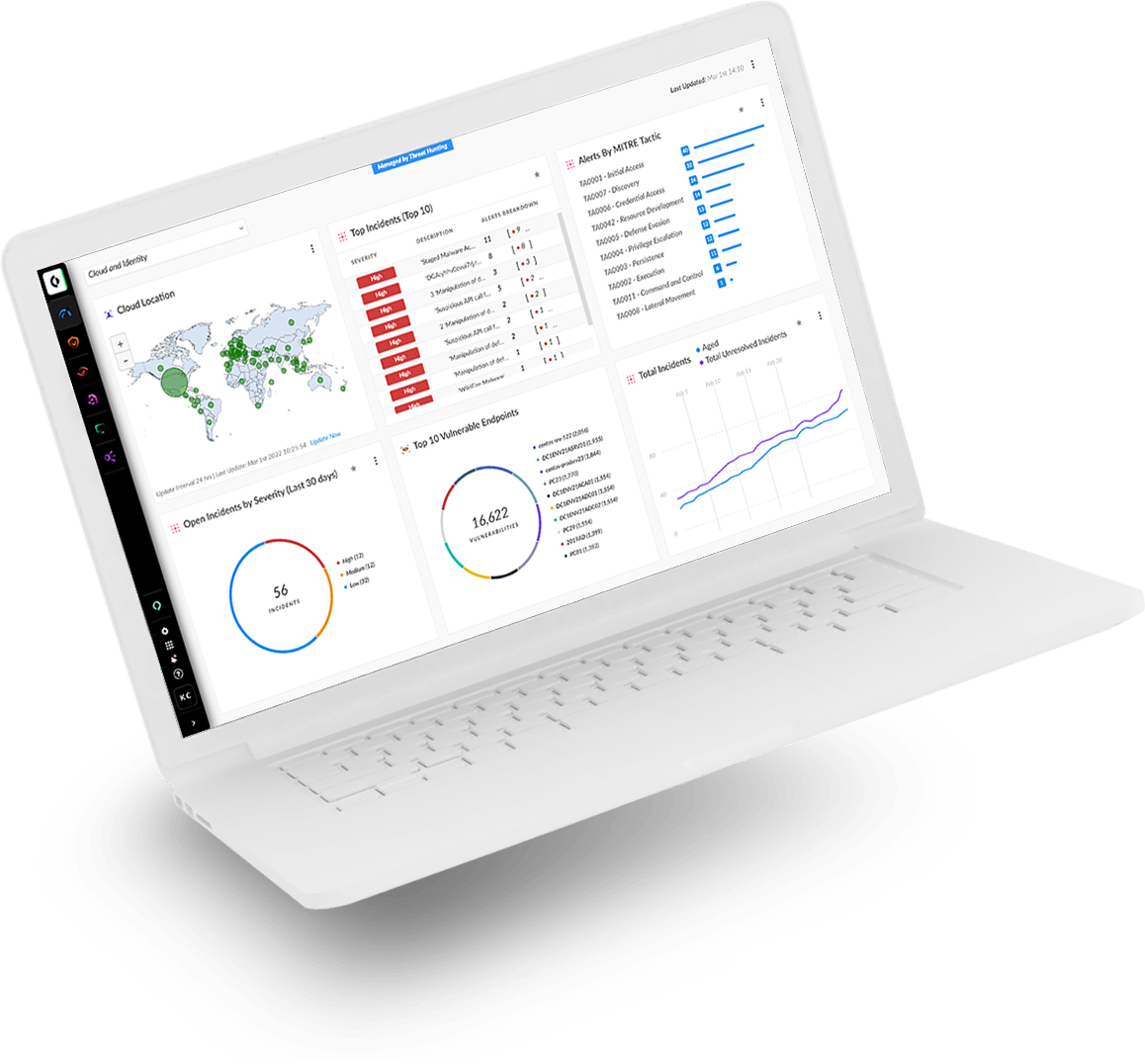Cortex XDR is the better choice
to stop modern threats
Endpoint protection lays the groundwork for an effective security strategy and Cortex XDR’s endpoint protection consistently rates superior to CrowdStrike EDR in independent third-party evaluations. In the MITRE ATT&CK® Round 3 Evaluations, Cortex XDR blocked 100% of attacks versus CrowdStrike’s 70%. And in the MITRE ATT&CK Round 4 Evaluations, Cortex XDR led with 98% technique-level detections over CrowdStrike's 71%, continuing to demonstrate leadership in endpoint protection and detection.
So why trust CrowdStrike when these endpoint-focused results are clear? And what about the fuller scope of true XDR across endpoint, network, cloud and more? Cortex XDR® is the first XDR with a proven track record of success and is trusted by over 3,000 customers. Learn the details about how Cortex XDR outperforms CrowdStrike below.

The Best Protection
A prevention-first approach should be the foundation of your organization’s endpoint security strategy. And when it comes to unknown malware, Cortex XDR’s behavioral threat protection and AI-driven analysis bests CrowdStrike in both real-world MITRE ATT&CK evaluations and AV-Comparatives testing. Behavioral threat protection matters. By tracking the sequence of the activity chain and applying context to those actions as they occur, behavioral threat protection is able to recognize and prevent highly evasive, complex attacks automatically and accurately. Combined with technique-based exploit prevention, global threat intelligence, and cloud-assisted analysis, the Cortex XDR agent offers better, more robust protection. CrowdStrike’s reliance on hash-based protections and IoCs focuses only on known attacks and after-the-fact detection, so protection suffers, as evidenced by their inability to stop 30% of attacks in MITRE Round 3.
Protection is never perfect. And when it comes to detection and visibility, Cortex XDR is again clearly superior to CrowdStrike. Cortex’s rich telemetry collection and extensive cloud-based analytics detection modules identify malicious activity across the attack lifecycle and arm analysts with the data they need to drive resolution.
Clearly Superior Detection
These superior detection capabilities help explain why Cortex XDR consistently outperforms CrowdStrike in MITRE ATT&CK Evaluations. In MITRE Round 4, CrowdStrike found only 94 of 109 analytics detections, with 11 delayed detections. Delays can have significant consequences. Real-time detections mean faster response times and less impact to your organization.

Faster, More Complete Investigation & Response
Cortex XDR automatically groups alerts into incidents, provides threat modeling, gathers full context and builds a timeline and attack sequence to understand the root cause and impact of an attack. Customer studies show that Cortex XDR can reduce security alerts by over 98%* and cut investigation times by 88%.** Plus, one-click remediation speeds attack recovery across all affected endpoints. CrowdStrike relies much more heavily on the analyst to investigate and recover from attacks. Events are presented separately, responses are done individually, and remediation is done manually with limited automation. More risk, less efficiency and delayed recovery may be the end result.
*Based on an analysis of Cortex XDR customer environments. ** Palo Alto Networks SOC analysis showing reduced investigation time from 40 minutes to 5 minutes.Is Your Endpoint Security Solution Good Enough?

Cortex XDR consistently outperforms CrowdStrike in MITRE ATT&CK® Evaluations
In the MITRE ATT&CK Round 4 Evaluations, Cortex XDR identified over 97% of attack substeps with “technique level analytics detections” versus CrowdStrike’s 71%. Technique detections are the gold standard, providing all the detail and context needed to understand what was done, why, and how, empowering the security analyst to take action and remediate the threat. Cortex XDR gives your analysts superior intelligence to stop attackers at the earliest stage.
You should demand that your endpoint security provider be able to defend against all adversary tactics and techniques to avoid overloading your SOC team with alerts, incidents and possible breaches – all of which could have been prevented.




